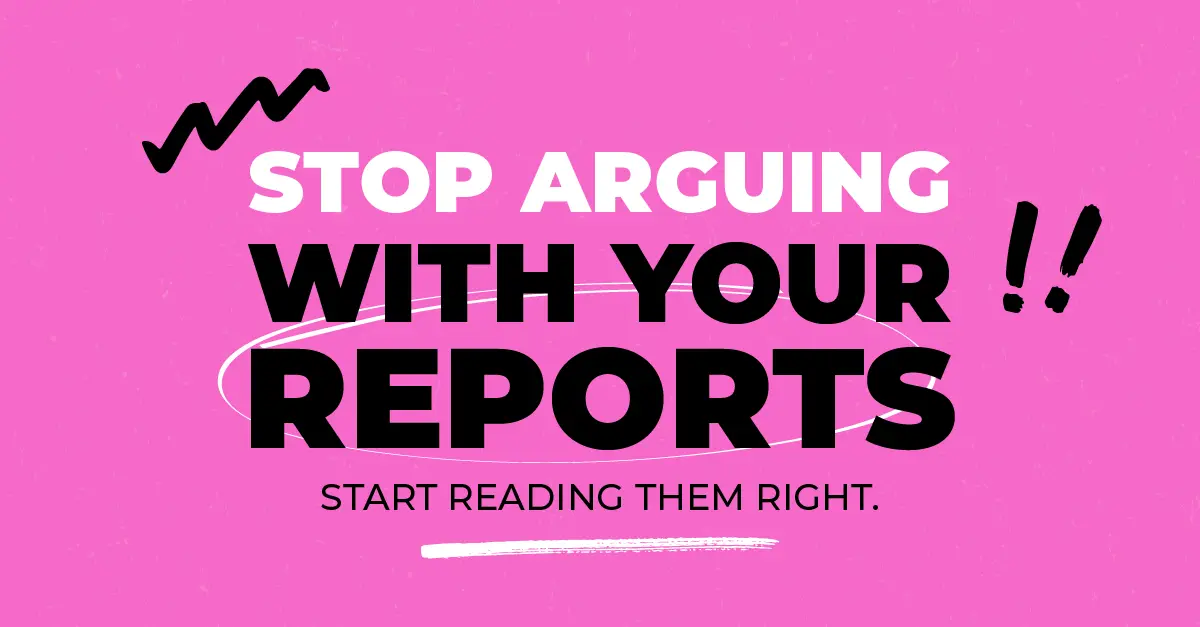If you’ve ever opened your reports and noticed Meta, Google, and Shopify all claiming credit for the same sale, you’re not alone.
It’s one of the most common (and confusing) realities of e-commerce reporting.
So, why does it happen? And which number should you trust?
Let’s unpack the attribution iceberg.
THE ATTRIBUTION GAP
At the core of this reporting gap is how each platform attributes sales.
Each one tells a slightly different version of the story, based on how it tracks user behaviour and the journey to conversion.
Meta’s View: First-Touch Attribution
Meta (Facebook and Instagram) leans toward a first-touch or view-based attribution model.
That means if a shopper first sees your ad on Meta, even if they don’t click or purchase right away, Meta still claims the sale if that person converts later.
Example:
- A shopper sees your product in a Meta carousel ad.
- They don’t click, but they remember it.
- A few days later, they Google your brand and make a purchase.
➡️ Meta logs this as a Meta conversion, because their pixel fired when the ad was seen.
This often inflates Meta’s sales numbers, particularly for top-of-funnel (TOF) campaigns where the platform creates awareness but doesn’t close the sale.
Google’s View: Last-Click (or Near-Last) Attribution
Google, on the other hand, focuses on last interaction.
In the same example:
- The shopper searches for your brand on Google.
- They click a Search ad or Shopping listing.
- They purchase.
➡️ Google logs this as a Google sale — because the conversion happened through their ad.
From Google’s lens, they closed the deal.
Shopify’s View: Transaction Source
Shopify tracks attribution at the transaction level, showing where the user clicked from right before purchase.
For example, Shopify might report a sale from “Google / CPC” even if awareness started on Meta days earlier.
It only attributes the final click, not earlier influences.
Limitations:
- Ad blockers and privacy settings hide some referral data.
- Private browsing disables cookie tracking.
➡️ Shopify doesn’t double count, but it doesn’t see the whole journey either.
SO… WHO GETS THE CREDIT?
Short answer: all of them.
Long answer: each platform plays a unique role in the funnel.
- Meta: Drives awareness (Top-of-Funnel) and sparks interest.
- Google: Captures intent (Bottom-of-Funnel) and closes sales.
- Shopify: Records the transaction, the cleanest source of truth.
Without Meta, the sale may never have been sparked.
Without Google, it may never have closed.
Without Shopify, you’d have no verified data.
WHY THIS MATTERS FOR REPORTING
At EXPAND, we don’t see these platforms as competitors, we see them as collaborators in the same customer journey.
Attribution isn’t a blame game. It’s a map of how your customer thinks.
That’s where tools like Google Tag Manager (GTM) and Google Analytics (GA4) become essential.
Using Google Tag Manager for Better Attribution Control
With GTM, we gain more control over:
- When each pixel fires
- Which events are tracked
- Who qualifies for attribution
Example:
- Delay Meta’s pixel from firing until a key event (like Add-to-Cart or Purchase).
- Isolate TOF conversions for cleaner retargeting.
- Reduce double-counting by defining attribution triggers more precisely.
Result: cleaner data and more credible reporting.
Using Google Analytics for Smarter Attribution
Google Analytics gives us a cross-channel view of how users discover, engage, and convert, making it easier to see the assists behind every sale.
It helps you:
- See which channels drive first clicks and awareness.
- Compare how Meta, Google, Email, and Organic support each other.
- Identify drop-offs or underperforming stages in your funnel.
Example:
- Meta drives awareness traffic → Google Search closes the sale.
- Email flows convert repeat buyers → Meta keeps them engaged.
- A Display campaign gets clicks → but GA4 shows low session quality.
This insight helps you make smarter budget decisions and balance awareness vs conversion spend.
STRATEGIC TAKEAWAY: META SPARKS, GOOGLE CLOSES, SHOPIFY CONFIRMS
When both platforms claim a sale, don’t pick sides.
Recognise their partnership:
- Meta sparks the interest.
- Google converts it into revenue.
- Shopify verifies it.
That’s how a full-funnel ecosystem works.
BONUS INSIGHT:
The Power of TOF Converters
Among the most valuable, yet misunderstood, audience segments?
Top-of-Funnel (TOF) converters.
These are the unicorn customers who see an ad, click, and buy, skipping the usual multi-touch funnel entirely.
They:
- Signal high creative resonance
- Validate targeting accuracy
- Provide data to shape future lookalikes
They don’t disprove the funnel, they prove what great creative can do when everything aligns.
FINAL WORD
Attribution is messy, but that’s what makes it powerful.
By understanding why Meta, Google, and Shopify numbers don’t match, and connecting the dots between them, you get closer to the truth of how your customers buy.
At EXPAND, we use that insight to help brands build marketing systems that work together, not in silos.
🎯Because in the end, it’s not about who gets credit.
It’s about driving growth with clarity.
If you’re seeking clarity with your reporting, reach out to us for a no-hassle discovery call.

